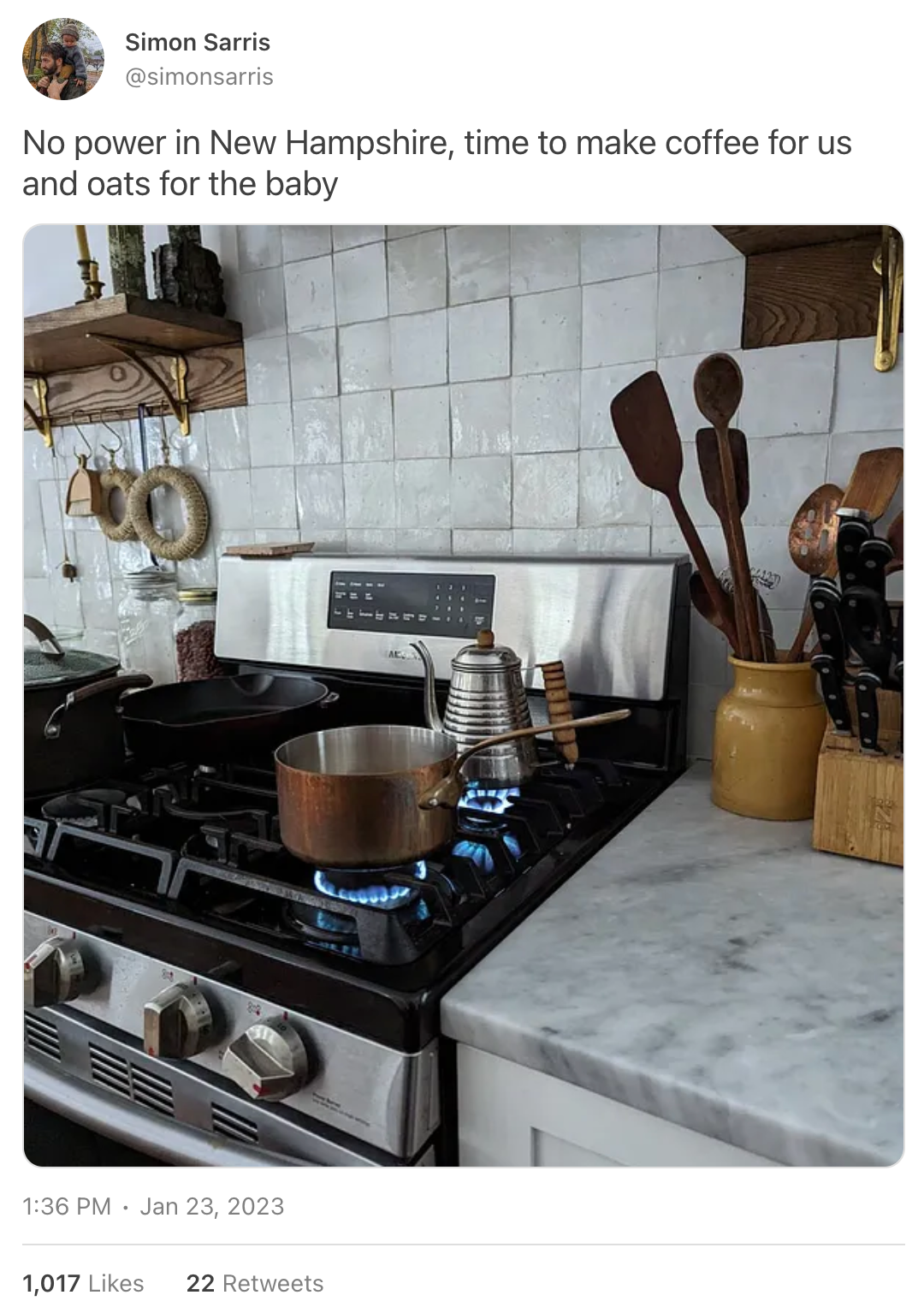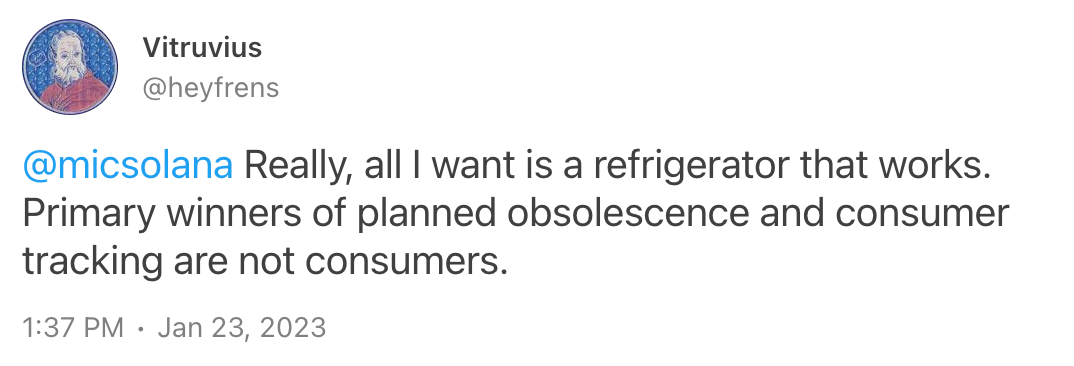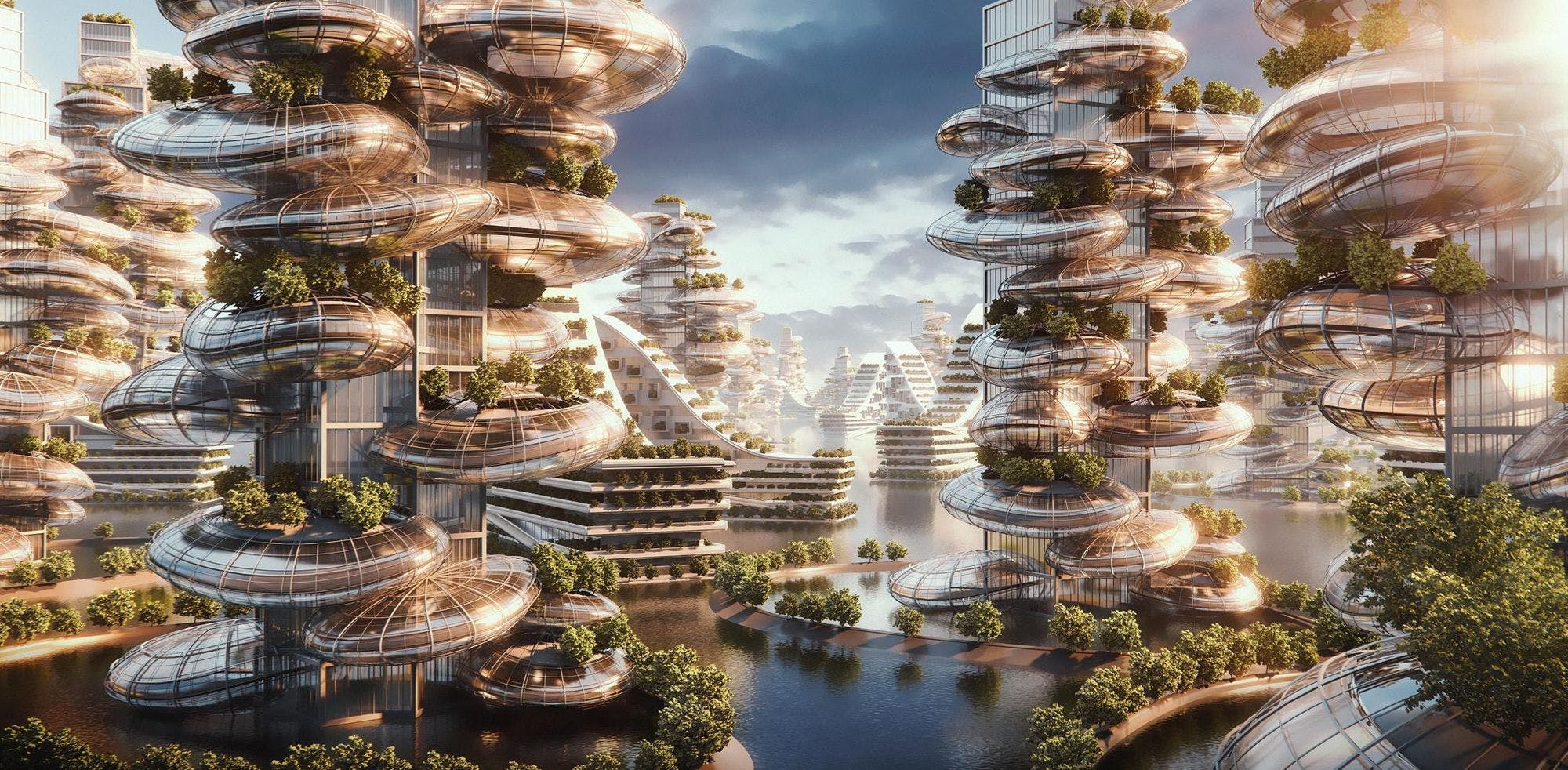Meet the Transsexual Hijabis Welcoming the Muslim New World Order Nov 9
muslim immigration in the west has become a hot button issue. for some, it's just hot.
River PageCooking with fire. At the top of the month, as if with a gunshot start to 2023, America was blessed with an almost perfectly idiotic controversy when a previously unknown government bureaucrat declared his desire to ban gas stoves. From classism and elitism to “expert” deception, the bureaucrat’s interview struck every necessary chord to polarize the previously benign topic of your kitchen along standard tribal lines, and ignite a fierce national debate on the question of how you should fry your morning eggs. But the foodcel knife fight was different from the standard culture war story in one significant way: while both sides of the debate pitched arguments on behalf of their chosen tool’s superior cooking ability, support for gas stoves came mostly from regions where people don’t use them, and support for induction came mostly from regions committed to gas. In other words, given revealed preferences in opposition to stated opinions, the battle had nothing to do with the actual function of technology. For most, this was a fight over what the future should look like, and for the first time in over half a century most of the country preferred the look of fire to “the future.” A major problem for technologists.
Aesthetics are a hell of a drug.
Designed to evoke the Jetsons, induction stoves sell the story of smooth metallic happy robots serving humans in utopia. We kick our feet back in the clouds, replicate a dinosaur steak, and watch the holographic evening newsmen chatter over dinner. It is an accessible, immediately recognizable, technologically progressive aesthetic that has driven the country forward for over six decades — American Futura, let’s call it, or what the future looked like according to your grandma. But, in the post-war 1950s, nobody had to force your grandma to buy a dishwasher. This is because the dishwasher worked.
By midcentury, from ubiquitous lighting and refrigeration, America jumped rapidly to the sorcery of air conditioning, the washing machine, and the microwave. Suddenly, there were electric toasters and ice machines, electric juicers and waffle makers. We take it for granted today, but that first Mr. Coffee was a miracle. All of these tools looked roughly the same, as if friendly, helpful cousins in some extended nice-guy Cylon family, forging a look and feel of American Futura that would live for decades. Critically, these tools had another thing in common: they were honest.
Cumulatively, the first generation of consumer electronics freed up billions of man hours, and reinforced a promise embedded in the American Futura aesthetic today: the new way to mix batter, to toast bread, to blend drinks will not only look faster, easier, and better, it will be faster, easier, and better. But as the decades progressed, with no shortage of “new” models released, very few of these tools were meaningfully improved. Today, far more problematically, many of our most basic tools are actually getting worse — even as technological capability dramatically advances.
Professional cooks outraged by an electric mandate in Berkley recently sued the city in favor of gas, which will come as no surprise to anyone who actually enjoys cooking. Induction fails in many ways, from its inferior ability to evenly braise or fry to its frustrating conductivity issues, temperamental touchscreen elements, and its elimination of an entire class of cookware. But then there’s also this:

It is interesting that California, a state in which rolling blackouts have become a routine part of life, is now mandating reliance on electricity in order to feed ourselves. Truly, a sentient alien visiting earth for the first time would look around and wonder — just baffled — at our strange culture of electing people who spend most of their time attempting to kill us.
The failure of induction is emblematic of an entire class of modern instrument designed in American Futura, which no longer live up to its aesthetic promise: automated service at the airport invoking the robot waiter, reduced to a state of gorgeous touchscreen tablets caked in grease unable to answer basic questions, or even fix your order; motion-detecting faucets, soap dispensers, and hand driers that so predictably fail one wonders if they were specifically designed to consume fewer resources at the expense of public sanitation; robotic phone operators built to loop through hours of twists and turns, as consumers drift through a labyrinth of cheerful, mechanical uselessness, growing ever more frustrated by “the future.”
Why is there a television on my refrigerator? Why are you trying to connect my dishwasher to the internet? Why are networked-thermostats taking orders from the government rather than their owners?

Every piece of consumer garbage designed in the style of American Futura that serves to frustrate rather than improve the lives of average Americans constitutes a broken promise, and each broken promise subtly erodes excitement for the future in general — or, that very specific future of the 1950s. With the death of American Futura, we have no easily-accessible sense of where technology is taking us, and so technology is met with hostility rather than celebration. But there are all manner of incredible technologies working, from something so seemingly simple as GPS to the stunning advance of artificial intelligence. Such technologies need a new aesthetic, as captivating and inspiring as it is evocative of something true. This will require a robust exchange of ideas and sentiment between people working on the kind of new technology that is actually capable of improving our lives, and the nation’s creative class.
Unfortunately, this brings us to the topic of contemporary art.
A philosophy of ugly things. You would be forgiven if you thought perhaps the human race was no longer capable of even perceiving, let alone producing, beauty. In the first place, beyond the realm of our lush and elaborate video game realities, the physical world increasingly looks like this:

Rather than this:

Let alone something like this:

Last week, the New York Times published a piece on the epidemic of hideous housing rising up across the country as brightly-painted stacks of shipping containers. The premise was simple: everyone really seems to hate these godforsaken Lego houses. Why do we keep designing things that look like this?
Eternally, where any local government’s approval process is concerned, we are forced into a false choice between building nothing, and exclusively building residential complexes that make us feel like we’re in prison. The architectural style is often framed as economical, but there is not a person in the country who believes it impossible to build a slightly more attractive building. The truth is just the bland sameness of these structures conveys a set of values local politicians find attractive: efficiency, simplicity, and (most of all, because they’re all insecure) equality. No one is better than anyone else!
The nothingness of contemporary design also evokes a kind of invitation to project your own values onto an empty canvas, whatever your values may be, given every value now is valid. But if you stand for everything, you don’t really stand for anything. A society of empty boxes. It’s perfect, actually.
In the world of “fine art,” it is not enough to provide nothing. One must also deconstruct our former values. Over the holiday, the city of Boston unveiled its new memorial to Dr. Martin Luther King Jr.

Art like this, for me, is literally a kind of terrorism.
We could analyze specifically the many ways in which the MLK statue, along with most contemporary art, is bad — the self-importance, thrown as we are into questions concerning the artist rather than his heroic subject; the monstrous, anti-human disembodiment; the unfortunate fact that the statue appears to be, from behind, a giant penis in the act of being stroked — but analysis of this kind is the first great pitfall of postmodernity. In any attempt to prove, in some logical sense, how a thing is beautiful or not, one expresses only his failure to grasp the nature of beauty, which is self-evident. One also commits himself to extended conversation with nihilists, which is never advisable. It’s better to focus on artists who inspire.
Despite growing sentiment to the contrary, there are many people today still capable of producing beautiful work. It’s just the few great artists who aren’t actively trying to destroy the country are busy making money. With deeply alluring commercials evocative of our most cherished ideals, Coca-Cola convinces the country flavored sugar water is a core part of its identity. And what is the average Marvel movie but a showcase of classical beauty in chiseled, youthful bodies, from Heaven-like dimensions, fighting for mankind — while selling toys, and clothes, and overpriced subscriptions to Disney+?
That there are artists in the world who like money is great news. Technologists are known for many things. One of them is being rich as hell. Honestly, guys, what have you even been plotting at your local EA cuddle puddle?
You need to be culturemaxxing.
There are way too many rich people in San Francisco for there to be no giant statues being built along the San Francisco Bay, one hundred-stories high, in commemoration of our nation’s greatest heroes. If I can’t yet live in a solar punk vision of Tolkien’s Lothlorien, and a sprawling, interconnected system of castles erected in steel and glass and genetically-modified flora, with prehistoric-looking ivies powering our buildings, and giant lilies opened up to me with offerings of nectar, can I at least be seeing murals of this stuff?
Where are the tech money libraries, museums, paintings? Are there no movies worth producing? I have heard way too many of you talking about White Lotus and Euphoria to believe you have no opinion whatsoever on what constitutes good television, and no interest in hanging out with actors. Maybe you’re not a big fan of Hollywood. Great. You know they’re making television on the internet now, right? That paradigm-altering, ever-present fact of contemporary life you invested in and built?
Technologists are not only well-funded, their values are inspiring: endless progression in service of a world post-scarcity, which is to say the superabundance of our material resources, and unlimited food, energy, and water for every person alive; the Lady’s Illustrated Primer realized, and adaptive learning powered by artificial intelligence; surgeons assisted in augmented reality; the Library of Alexandria in our pockets; literally immortality — these are not only good things, these are exciting stories. Altogether, this is an exciting story, and somewhere in this story is a new aesthetic.
But beautiful things, and beautiful stories about them, cost money.
Here, before some hefty investment in the beautiful, postmodernists tend to ask “what is beauty,” with a demand we interrogate every sense, feeling, and belief we have. But the question has no rational answer. We sit in silence for a minute, then forget about it all, and do nothing. This impulse among intelligent people is what reduced our world to its present, endemically ugly state.
When I saw the statue David in person it brought me to tears. That’s enough for me. I know David is beautiful. We all know David is beautiful. A giant-slayer after victory, his naked, muscled form relaxed, carved in marble as a giant now himself. The values are not so different, actually, from the values of technology: the youthful hero, tool in hand, usurps the despotic, monopoly incumbent. Dedication, intelligence, a sense of destiny. There’s a lot to work with here.
American Futura — the whirling, whizzing, “oh, golly” vision of smooth metallic cheerful robots doing dishes — is dead. That is a problem. But it also means we get to tell the next story. We get to influence the next, great aesthetic of the future. In fact, we have to. And again, someone really does need to step up and start paying for it.
Long live American Futura.
-SOLANA
0 free articles left